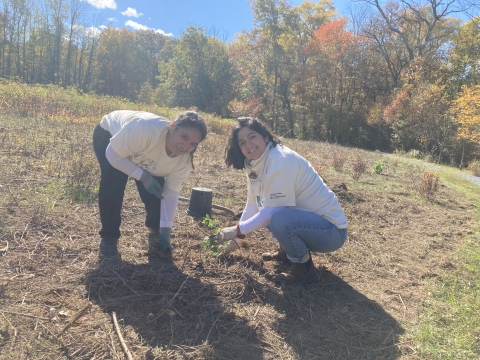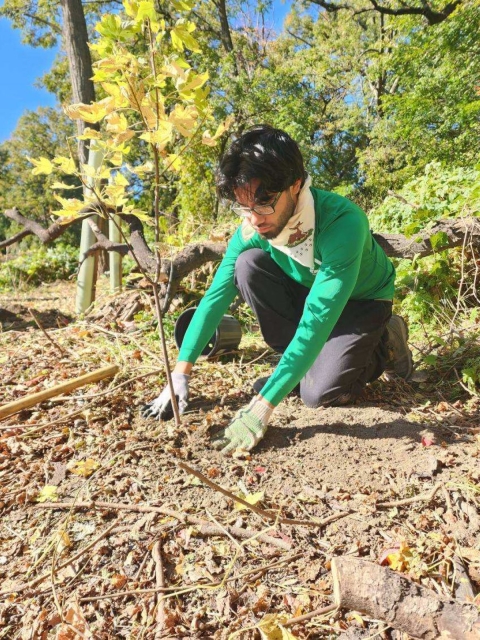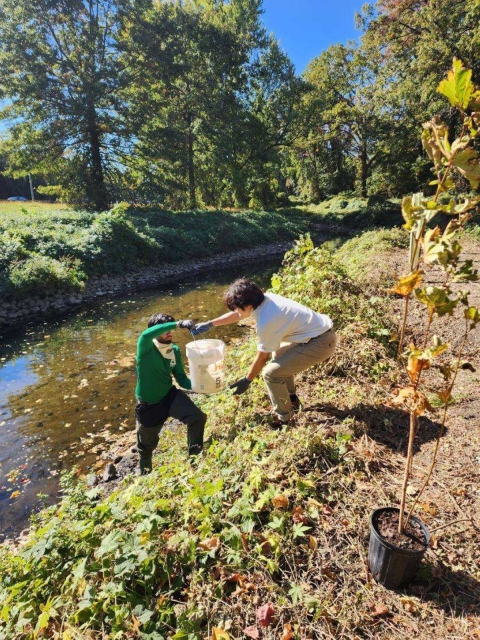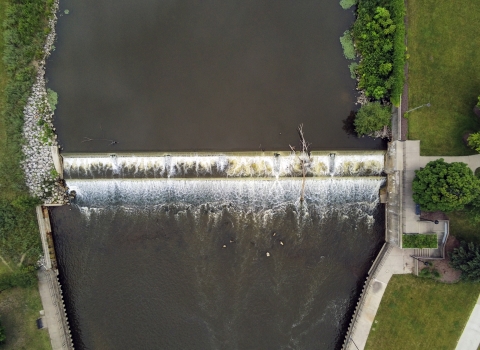National Wildlife Refuge Week, observed the second full week of October, celebrates the great network of lands and waters that conserve and protect Americans’ precious wildlife heritage.
Lenape National Wildlife Refuge Complex (NWRC) kicked off the National Wildlife Refuge Week celebrations on another special occasion— Urban Wildlife Conservation Day — a day to celebrate urban partnerships, refuges, and connecting nearby communities to nature.
For the first time the Lenape NWRC celebrated with t-shirts, tree plantings and collaboration between local youth and veterans. With two designated Urban Partnership Cities in Yonkers, New York and Elizabeth, New Jersey, the Lenape NWRC provides vital access to nature and outdoor recreation to many historically excluded residents in urban areas.
The Refuge Complex along with the Friends of Great Swamp NWR applied for and received a grant to celebrate National Wildlife Refuge Week and Urban Wildlife Conservation Day with our Groundwork Hudson Valley (GWHV) and Groundwork Elizabeth (GWE) partners, as well as local veterans. The grant provided support for the Refuge Complex to work alongside teens from Elizabeth and Yonkers to showcase artistic talents, restore green spaces, and connect to their national wildlife refuges.
Over the summer, GWHV and GWE participated in a t-shirt art contest and the winning design would be showcased during National Wildlife Refuge Week. The two winning artists received a cash prize provided by the Friends of Great Swamp NWR and recognition for their beautiful artwork. The designs were printed on t-shirts and scarves and provided to all participants in October.
Another highlight to this special week involved planting native trees in Yonkers along the busy Saw Mill Parkway in New York. Lenape NWRC delivered 30 native trees, for their restoration site at Richter Park. The GWHV crew had removed over 44 bags of invasive plants from the site, located along the Saw Mill River, adjacent to the Saw Mill Parkway. It is an area prone to flooding especially during big storm events. GWHV is working to restore the area and the trees planted here will help the area do its job as a flood mitigation site. GHVW started working on the site in the Spring of 2024 as a part of their National Fish and Wildlife Foundation 5 Star Urban Waters Restoration Grant and they came back to the site to plant the donated trees onto kickstart National Wildlife Refuge Week and highlight Urban Wildlife Conservation Day.
At the Great Swamp National Wildlife Refuge in New Jersey, a group of five youth from GWE and five veterans from the Lenape NWRC and Friends of Great Swamp NWR planted native flora in a newly created pollinator meadow adjacent to the refuge Visitor Center. The group was provided lunch and swag to wear during the event. The weather was perfect for planting and the diverse crew bonded over their experience. Everyone had the opportunity to learn about the importance of soil, while also having conversations about careers in conservation and military service.,
This unique experience brought together a variety of conservationists, from teenagers who are growing up in an urban environment to maintenance professionals who live in rural areas now after having served many years in the military. The unifying theme among all the participants was a shared appreciation for the outdoors and being stewards of our public lands. The youth and veterans were able to explore, discover and connect through nature. They learned about soils and when and how to plant. They talked about access and safety in the outdoors and fighting for opportunity within the conservation space. They shared stories of their struggles to address the climate crisis in their local communities and they heard from the veterans and their time in military service and how they ended up in their careers.
The celebrations for National Wildlife Refuge Week at the Lenape NWRC were not only about rediscovering nature but also about ensuring safety and access in the outdoors for all and empowering the youth to continue to be a voice in their own community. There was shared learning from both sides, and through this process we will learn together, build together and grow together.










